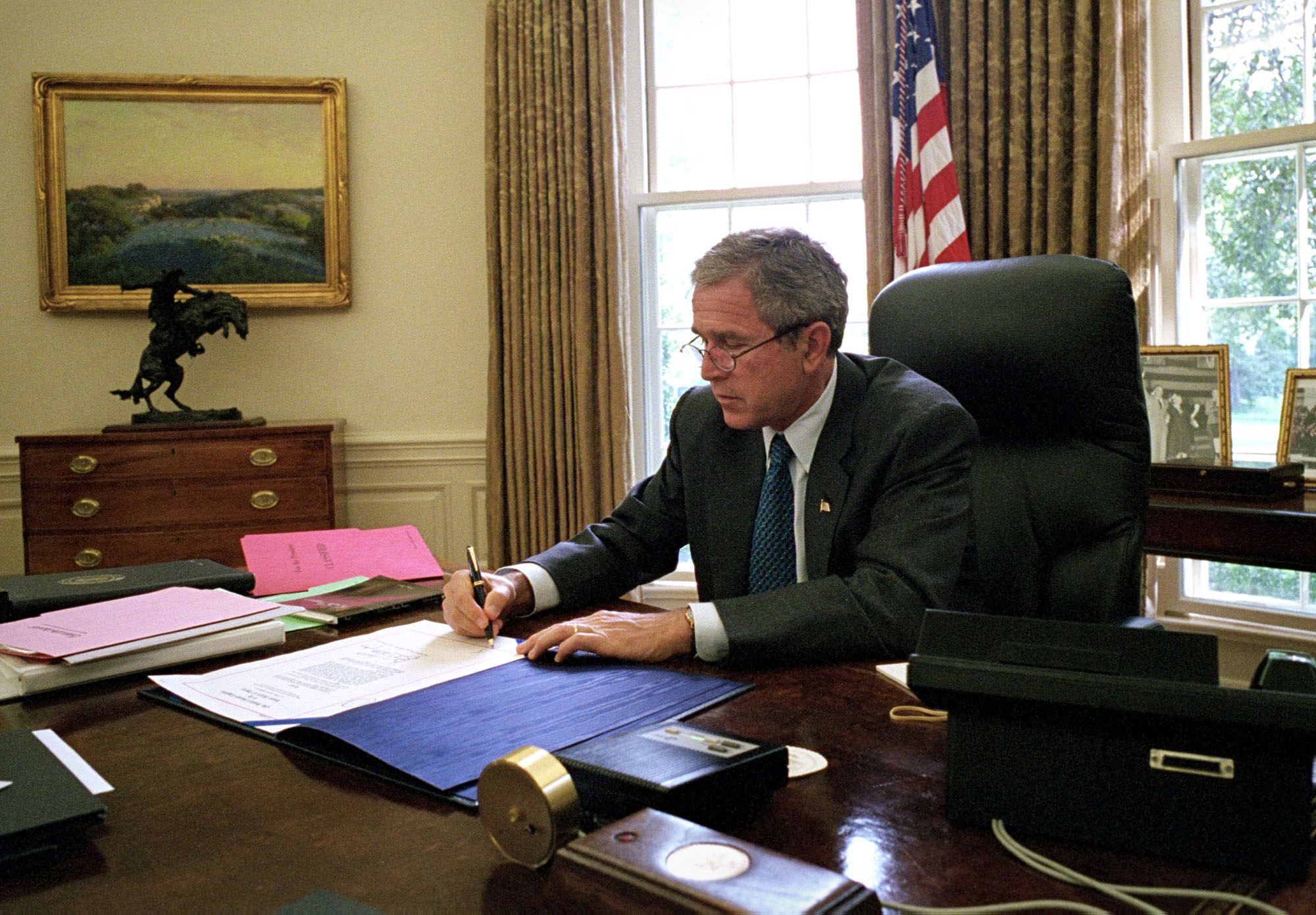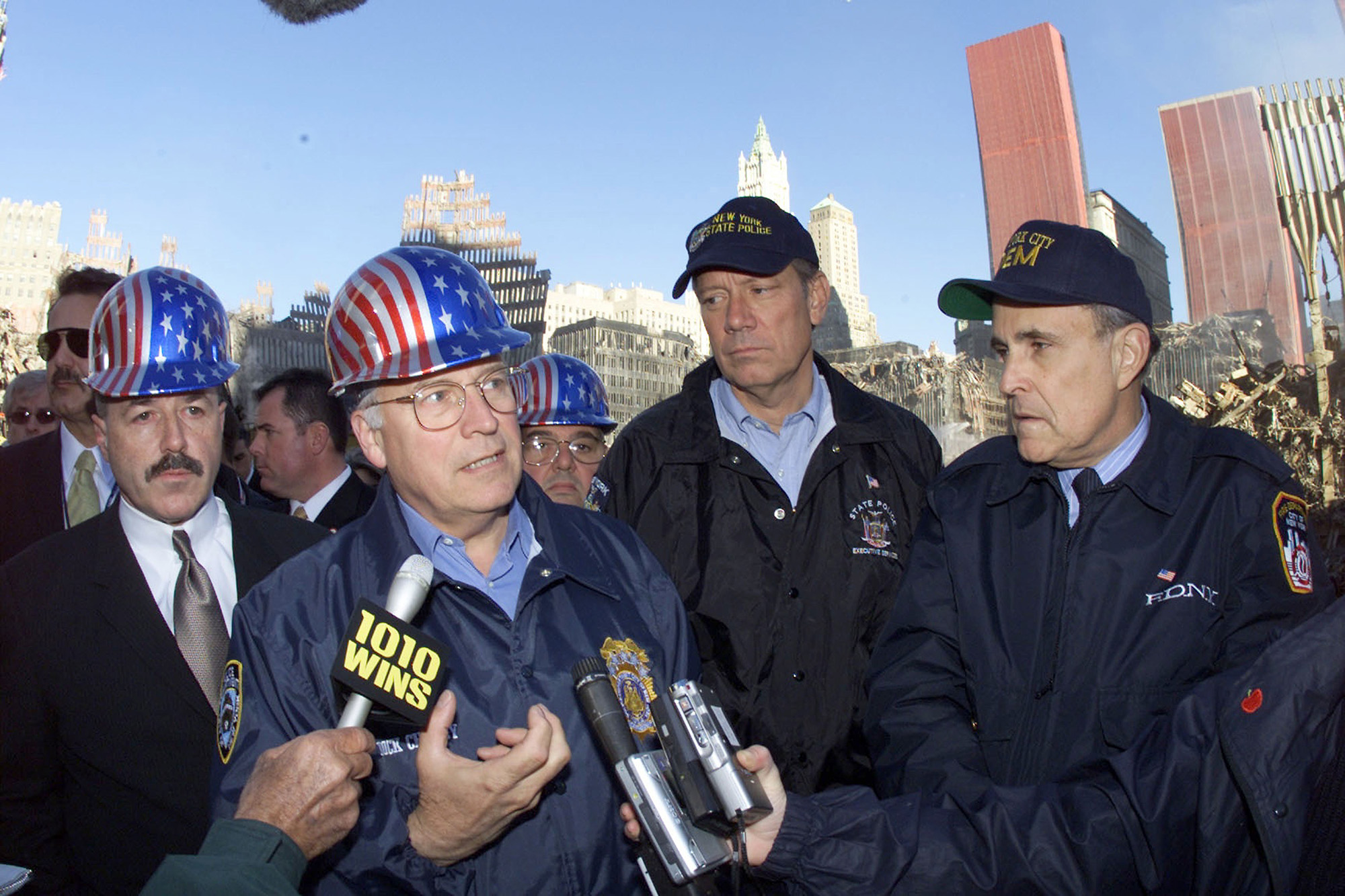Dramatic new details released of Bush, Cheney dealing with 9/11 attacks
The National Archives disclosed declassified notes from a 2004 interview.
More than 21 years after the Sept. 11 attacks, new details of how President George W. Bush and Vice President Dick Cheney reacted that day in the lead-up and aftermath are now public.
They come in 31 pages of newly declassified notes of the interview Bush and Cheney gave the independent 9/11 Commission in 2004 as it investigated the attacks and related issues.
Bush and Cheney sat together for the interview in the Oval Office on April 29, 2004, along with three aides.
The National Archives released the declassified notes this week.

One of the more dramatic portions is Bush, who was being rushed from Florida onto Air Force One for a day of hopscotching around the nation, recounting giving Cheney the authority to authorize a shootdown of a plane if necessary.
Bush said he understood the basic rules of engagement from his days as a Texas National Air Guard pilot. "He had been trained to shoot down planes. He understood generally how this worked - one plane would lock on, one would ID. He understood the consequences for the pilot, how a pilot might feel to get the order to shoot down a US airliner. It would be tough. He and Dick discussed it. He talked about what it would be like. Yes, engage the enemy. You have the authority to shoot down an airplane," according to the notes of the interview.
Later in the interview, the subject of a shootdown comes up again. As officials tried to figure out how many planes were unaccounted for, they thought three were still in the air. "The Vice President remembered getting ''word then that they [Air Force] were trying to cap up' over D.C. He opened up a line to the President and raised the issue of rules of engagement. He (the President) authorized shootdown. The President approved this before 10:00. Condi (National Security Adviser Condoleeza Rice) heard his (the Vice President's) end of the conversation," the notes state.
Cheney would then order the military to shoot down any unresponsive aircraft. What exact authority Bush gave to Cheney that day has been an ongoing question since that time.
Bush, in his 2010 memoir "Decision Points," wrote he initially thought the crash of United Airlines Flight 93 in Pennsylvania was the result of the shootdown order as did Cheney.
"The Vice President thought we'd shot it down. It took a while to sort this out. In the next half hour there were two or three occasions like this: a report of an incoming, would he reiterate authorization? Yes. In every case, though, the problem was resolved without shots being fired. Later in the day there were other reports of incidents ... a jet squawking a hijack code, a Korean Airlines jet. There was a lot of this, five reports during the day of hijacked planes. None turned out to be true," according to the interview notes.
Kean, the chairman, asked Bush and Cheney if they knew the Secret Service had ordered aircraft, out of the chain of command, scrambled out of Andrews Air Force Base. Bush responded he was not aware.

The notes, first reported on by the Wall Street Journal, also detail how Bush and Cheney were questioned about some of the intelligence controversies regarding the attacks. Commission chairman Tom Kean asked about the famous Aug. 6 Presidential Daily Brief entitled "bin Ladin Determined to Strike in US."
As he had done publicly, Bush said it was more of a document summarizing what was known about al Qaeda than an assessment of current intelligence and stressed he had actually asked for the report.
"The report itself was historical in nature. It said what al Qaeda was doing," the notes state. "Bin Ladin had long been talking about his desire to attack America. There was some operational data on the FBI. That 70 investigations were underway was heartening, that this was taking place." He told the commissioners the government was then developing a strategy to eliminate it. However, what wasn't known was some of the missed signals and the lack of information sharing between the CIA and the FBI.

Both men also discussed pushing Saudi Arabia, home to 15 of the hijackers and had come under criticism for not taking more action to crack down on terrorism financing, to do more.
Cheney recalled calling the Saudi Crown Prince on July 5th. "He went over what was known to him about the al Qaeda and Bin Ladin threat. He said the U.S. wanted to send a team to Saudi Arabia to alert Saudi counterparts about a potential attack. Tenet was talking to Prince Turki about this. The team would come over to work on this. The President said he thought that if there had been a serious concern in August, he would have known about it," the notes state.
Bush then said a "fundamental" problem facing every president was how to deal with the Saudis. "There was a sort of split personality there. Some found favor with al Qaeda and the extremists, supporting their radical policies.
"The U.S. had to have a process to push them to change their ways. The U.S. supported political reform. This stand had, the President commented, been widely disparaged. The last (to change) will be Saudi Arabia. The President understood that. But they were feeling the pressure. The royal family, the President added, was not a monolith. There were splits within the family. Crown Prince Abdullah may not know what his stepbrother is doing with certain NGOs spreading hate. The family was a complex organization, with different power centers. The President said he was worried about Saudi Arabia. He did not want it to become an al Qaeda country. Nor did he want it to form an alliance with Iran. He was not sure what else he could say, except that he was working the problem on a daily basis," the notes said.
The Director of National Intelligence had no comment about the timing of the declassification.




